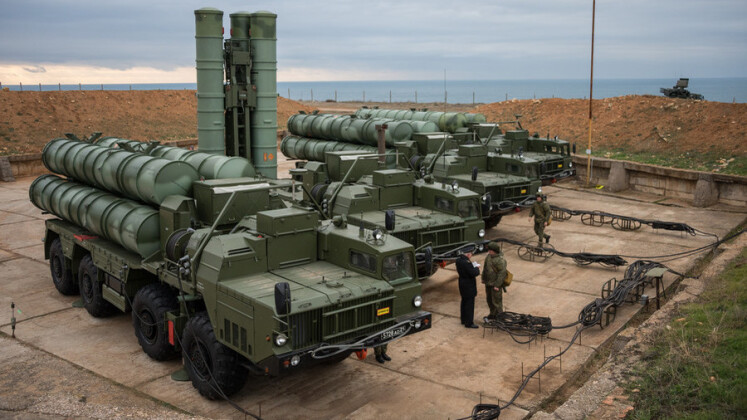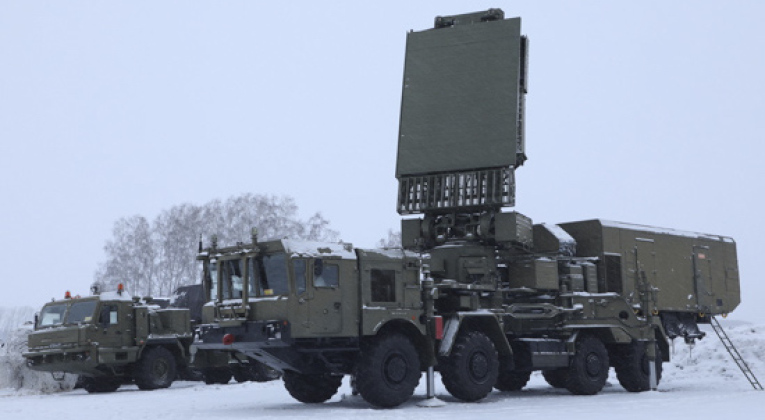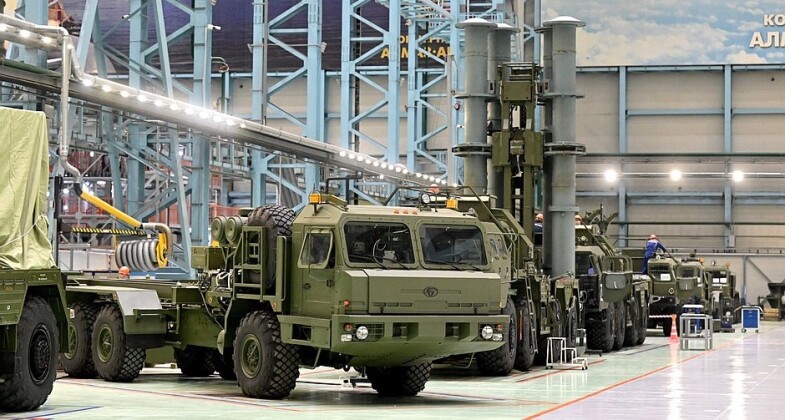Forming the backbone of the Russian Air Force’s surface to air missile arsenal, the S-400 is by far the most widely operated long range air defence system in any single country with over 30 regiments currently in service. Expenditures on S-400 acquisitions since the Soviet Union’s disintegration have been well over double spending on fighter aircraft acquisitions, with the system seen to be far more cost effective in guarding Russian airspace due primarily to its very low training and operational cost relative to aircraft providing a similar defensive capability. Moreover, where fighters were restricted to operating from a limited number of air bases – an issue which applied all the more to the heavyweight classes forming the backbone of the Russian fleet which had larger logistical footprints – mobile systems like the S-400 could quickly redeploy their launchers, radars and command centres after firing making them extremely difficult to neutralise. The value of this has recently been demonstrated in the Russian-Ukrainian War, with Russia having taken over a year to destroy Ukraine’s air defence network built around 1980s S-300 variants which, although still much more mobile than Western equivalents, have far lower mobility levels than the S-400 and require several times as long to redeploy. Furthermore, ground based radars were not only much larger than those that could be accommodated on fighter sized aircraft, but the S-400 used multiple radars operating in complementary wavebands providing a very high degree situational awareness and the ability to seriously threaten stealth targets.

While highly potent, the S-400 proved problematic for the Russian military to bring into service due to the extreme degree to which its defence sector had declined in the aftermath of the Soviet Union’s disintegration. This pushed the system’s induction date back by over half a decade from around 2000 to 2007. The complexity of the system meant multiple firms were involved in its supply chain, and many fo these closed or transitioned to civilian production due to the extreme neglect for defence acquisitions seen in the 1990s. Indeed, the program was only made possible due to funding from major exports of the preceding S-300 systems to China over the 1990s which accounted for the majority of production of long range air defence systems that decade. Beyond extreme decline in Russia itself, many design bureaus and plants which supported production were located outside Russia in other Soviet successors states causing further complications.

Russia’s defence sector was in by the turn of the century in a relatively weak position to pursue development of the S-400, after the program had slowed to a near total halt in the 1990s. Work on the system began to gain renewed attention only from 2000 under the new administration of President Vladimir Putin, which slowly revitalised the military and the defence sector with new investment and stem the country’s economic decline after GDP had almost halved the previous decade. On August 26, 2000, a new program to support the S-400’s development and production through rejuvenation of the Russian missile industry was authorised by the Kremlin, with three major new facilities ordered built for producing missile systems. These included a new wing of the Obukhov Plant in St. Petersburg, the Avitek Plant in Kirov which was throughly modernised, and the NMP Plant in Nizhniy Novgorod. This proved a lengthy process, and the facilities were only ready to produce S-400s on a large scale in the latter half of the following decade from around 2016. These efforts proved effective, however, facilitating a massive scale of production allowing multiple regiments worth of S-400s to be produced annually – alongside production of other long ranged systems such as the S-300V4 and S-500.

The S-400 today equips the majority of Russian long range surface to air missile systems in air force regiments, with some S-400s having also been deployed under the short lived Russian Aerospace Forces for ballistic missile defence purposes before this service branch was dissolved. The system notably eliminated the extensive use of foreign components seen in the S-300 primarily from Ukraine and Belarus – most conspicuously the use of the Russian BAZ-6402 Voschina-1 family of trucks which replaced the Belarusian MAZ-543M trucks. An extreme focus on developing productive capacity for, acquiring and modernising the S-400 came as part of a broader Russian focus asymmetric assets, many of them mobile ground based missile systems, to counter NATO forces arrayed against it across its western, northern and increasingly its eastern borders, which it is argued allows the country to guard its airspace far more cost effectively than investment in fighters or interceptors would have allowed.
President Putin in January 2023 alluded to the scale of Russia’s productive capacity for surface to air missile systems, highlighting on a visit to the Obukhovsky Plant in St. Petersburg that this exceeded that capacity of the rest of the world combined. This allowed Russia at the time to deliver S-400s to both Belarus and India, the latter at a very high rate, while simultaneously enlarging its own forces. Investment in the S-400 were key not only to strengthening Russia’s air defences, which were previously limited and at risk of becoming obsolete in the stealth fighter age, while also providing a major boost to local industry which allowed it to better satisfy export orders, surge production in wartime, and produce future more complex missiles systems such as the S-500.
